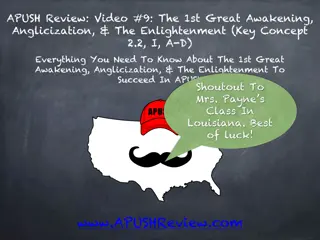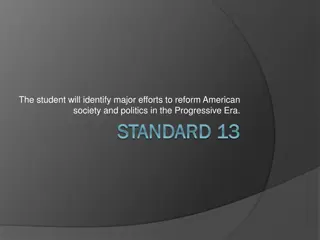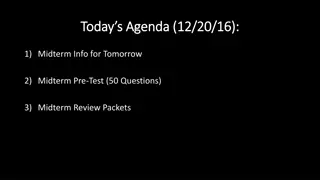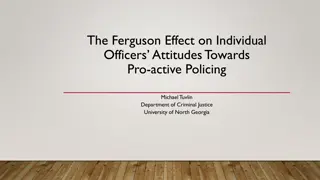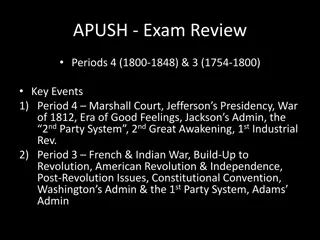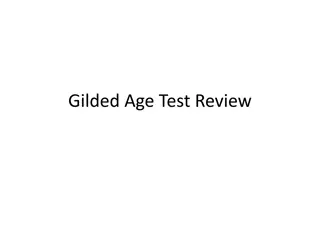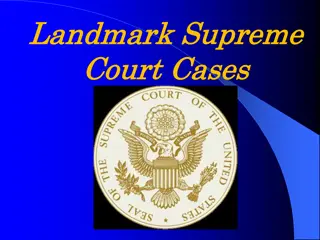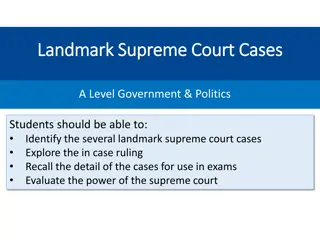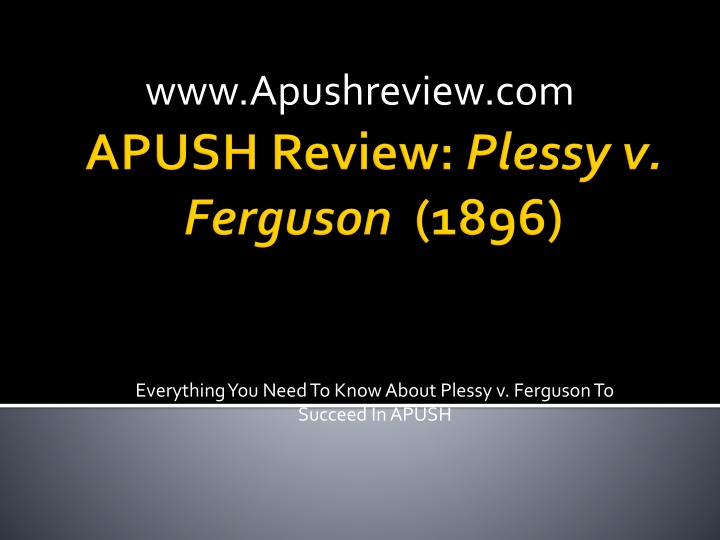
Key Points About Plessy v. Ferguson and Jim Crow Laws
Learn everything you need to know about the Plessy v. Ferguson case, including Reconstruction Amendments, Jim Crow Laws, the Citizens Committee, and the Supreme Court decision. Explore how the case upheld segregation laws and how it was finally overturned in 1954. Subscribe for more historical insights!
Download Presentation

Please find below an Image/Link to download the presentation.
The content on the website is provided AS IS for your information and personal use only. It may not be sold, licensed, or shared on other websites without obtaining consent from the author. If you encounter any issues during the download, it is possible that the publisher has removed the file from their server.
You are allowed to download the files provided on this website for personal or commercial use, subject to the condition that they are used lawfully. All files are the property of their respective owners.
The content on the website is provided AS IS for your information and personal use only. It may not be sold, licensed, or shared on other websites without obtaining consent from the author.
E N D
Presentation Transcript
www.Apushreview.com Everything You Need To Know About Plessy v. Ferguson To Succeed In APUSH
Reconstruction Amendments: 13th Amendment Abolished slavery 14th Amendment Granted citizenship, equal protection 15th Amendment Suffrage for African American males Jim Crow Laws Segregation laws in the South
Citizens Committee Civil Rights group Wanted to challenge segregation laws in Louisiana Separate Car Act Required equal, but separate train cars for blacks and whites Homer Plessy: Biracial, lived in Louisiana Arrested for sitting in the first-class section of a white train car
In view of the constitution, in the eye of the law, there is in this country no superior, dominant, ruling class of citizens. There is no caste here. Our constitution is color-blind, and neither knows nor tolerates classes among citizens. In respect of civil rights, all citizens are equal before the law. Plessy sued citing the 14thamendment, no state shall make or enforce any law which shall abridge the privileges or immunities of citizens of the United States . Louisiana Judge ruled that the state could regulate railroads within the state The Supreme Court decision: Sided against Plessy and for Louisiana in a 7 1 decision Lone dissenter was Justice John Marshall Harlan
Jim Crow laws are upheld by the Supreme Court Separate but equal remains in effect for 58 years In reality, separate facilities were NOT equal Plessy v. Ferguson was finally overturned in 1954, and 1964: 1954: Brown v. Board of Education 1964: Civil Rights Act of 1964 John McCutcheon cartoon from 1904
Subscribe to my channel Help spread the word Questions? Comments? Ideas for videos? Leave in comments




